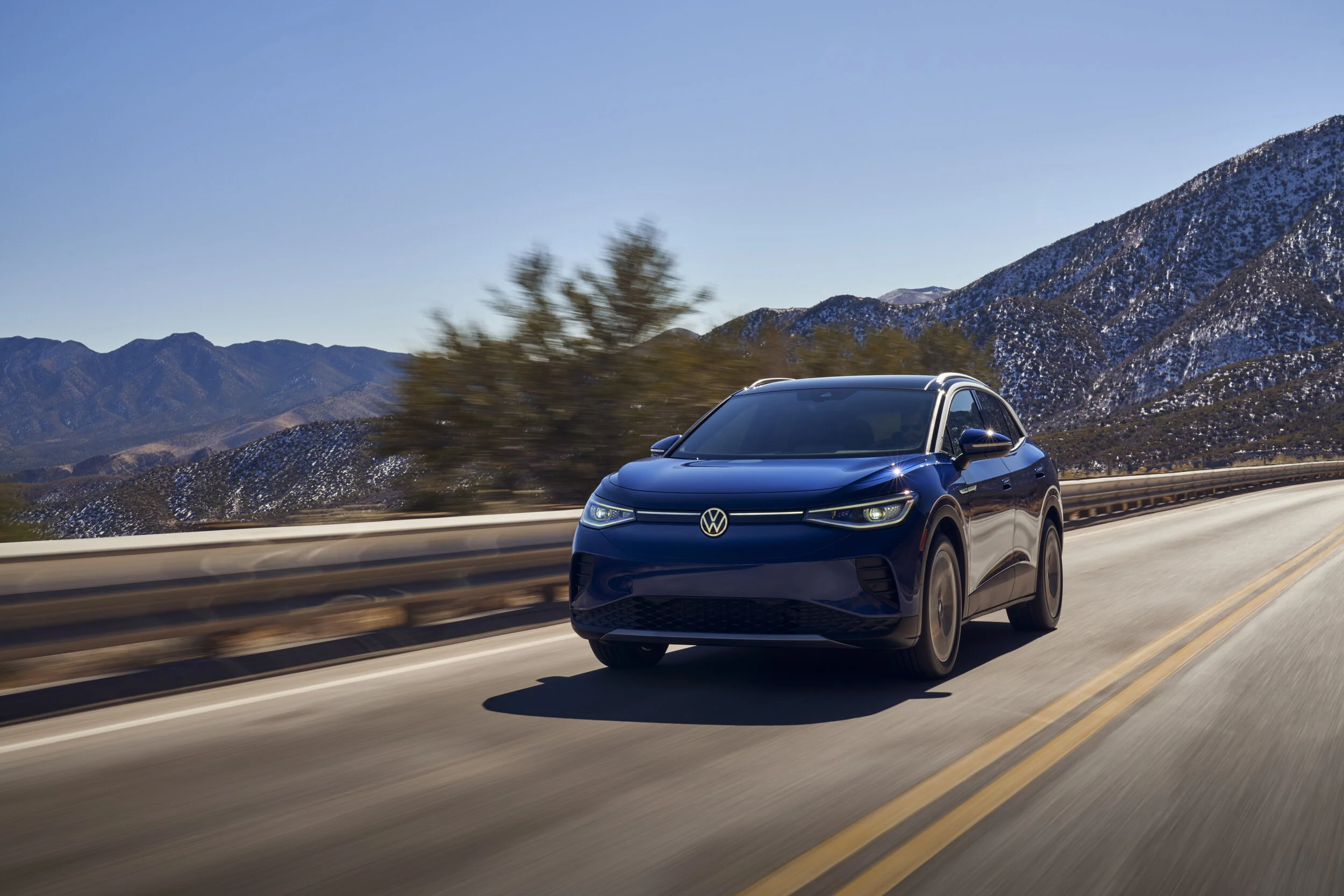2021 Volkswagen ID.4 Pro RWD Quick Drive
By Edward A. Sanchez – Sept. 17, 2021
A friend of mine recently called, knowing that I’m an electric car enthusiast, and informed me that he’d just purchased a VW ID.4. My curiosity piqued, and I had to drive it.
Personally owning a Tesla Model 3 SR+, my car has largely set my expectations for an EV driving experience, fairly or unfairly. That said, here are some of my impressions from my time behind the wheel of a 2021 VW ID.4 Pro RWD.
Going forward, it seems most, if not all ID.4s sold in the U.S. will be built in Chattanooga, and my totally unscientific, subjective hunch is that the majority of them will be the all-wheel-drive model. This particular model, however, was a German-built, rear-wheel-drive model.
First impressions of the styling and packaging are positive. The ID.4 has a clean, contemporary European look that manages to convey a high-tech aura without being too edgy to be off-putting. The front and rear VW logos are backlit and give off a pleasant glow at night. An LED strip runs across the back of the rear liftgate and gives a cohesive look to the ID.4’s overall styling.
The ID.4 has what appear to be conventional door handles, unlike the Tesla Model 3 and Model Y’s flush-mounted pivoting metal handles. On closer inspection, the “handles” are just pockets, as the handles don’t actually move, but cover a rubberized button (much like on contemporary trunk or liftgate mechanisms) to actuate the door latch. The door handle pockets are also lit, to prevent fumbling around at night.
The interior of the ID.4 is modern and pleasant, but not as “out-there” as the Model 3 or Model Y mono-display design. There is a small display attached to the steering column that moves with the steering wheel adjustment, in addition to a center infotainment and control display.
The PRNDL mechanism is also attached to the steering column assembly, and unlike Tesla, Mercedes, and others, it’s not a tap up/down lever, but a twist knob, in which reverse or drive are activated by twisting the actuator toward or away from you, respectively. The one similarity to the Tesla or Mercedes shifters is that “park” is a button on the end.
One odd ergonomic quirk that has been noted in other reviews is the lack of dedicated rear window controls from the driver’s seat, instead using a separate haptic button to activate the rear windows.
If you’re not expecting Plaid-level performance, the acceleration of the RWD ID.4 will probably be fine. However, coming from my SR+, the ID.4’s performance felt decidedly tame in comparison – I would even venture to say borderline gutless on a comparative basis.
Most instrumented testing on the ID.4 RWD has the 0-60 mph time somewhere in the neighborhood of the high 7 to 8-flat second range. And in all honesty, it felt slower than that. The single-motor ID.4 feels peppy at parking-lot speeds, but once out on actual roads, the acceleration sensation is decidedly muted.
Some of that could be chalked up to the somewhat unfavorable power-to-weight ratio of the RWD ID.4. For its size, the ID.4 is undeniably porky, whether by ICE or EV standards. The RWD ID.4 pro weighs in at 4,665 pounds, nearly 900 pounds more than my Model 3 SR+, and more than 200 pounds more than an AWD Tesla Model Y. The ID.4, at least in rear-wheel-drive form, has substantially less power than either, with 201 hp and 229 lb-ft of torque. While some of the ID.4’s leisurely demeanor could be chalked up to throttle calibration, there’s only so much the single rear motor has to give working against that weight, and more than 500 pounds of three passengers.
I had limited time to shuffle through the infotainment controls and other aspects of the car, but from a purely objective standpoint, the ID.4 ticks the boxes for practicality, with a roomy rear seat and decently sized rear cargo area, although unlike Tesla and some other EVs, there is no “frunk” – power electronics and other dirty bits are shoved under the hood.
I am eager to drive an AWD version of the ID.4, as those models have roughly 100 more horsepower and lb-ft of torque, and have a claimed 0-60 mph time about the same as my Model 3 SR+. Naturally, total range takes a small hit with the addition of the second motor. But based on my brief experience with the RWD ID.4, the added power of the front motor would be well worth the small sacrifice in range. And initial reviews of the AWD version are positive, and say the added power transforms the ID.4’s personality and driving dynamics.
Veteran automotive engineering tear-down analyst Sandy Munro somewhat uncharitably called the ID.4 RWD “a great car for an old person” in one of his video reviews. I wanted to withhold judgment myself until I actually drove one, and now that I have, I can say that I concur with his opinion.
In single-motor guise, there’s not much excitement with the ID.4’s driving experience. For someone who simply wants a conservatively stylish, contemporary crossover that’s quiet and practical, the ID.4 ticks all of the boxes. But if you’re expecting VW’s traditional “Fahrvergnügen” vibe embodied in cars like the GTI, you won’t find much of it here, at least certainly not in single-motor form.
(Photo credits: ©Tim Liao)
- Podcast - Facebook - Google News - Twitter -










